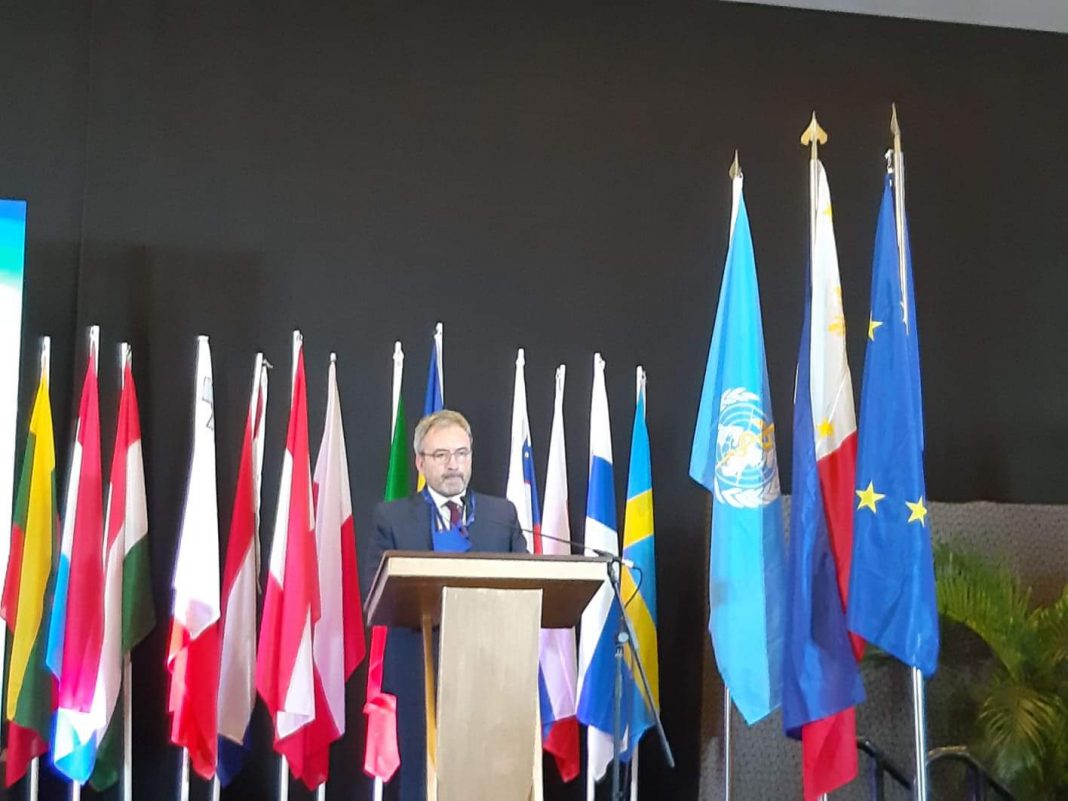By Victoria “NIKE” De Dios
Philippines’ trade official sees for the country the need for the extension of the European Union’s (EU) trade preferences program while pursuing a possible free trade agreement (FTA) with the bloc for boosting bilateral trade relations.
Angelo Salvador Benedictos, director of the DTI-Bureau of International Trade Relations, said they want the renewal of the EU Generalised Scheme of Preferences Plus (GSP+) as “it benefits a lot of industries, a lot of areas in the Philippines, and of course the Philippines.”
The current EU GSP+ scheme, which allows for the duty-free entry of 6,274 Philippine products into Europe, will expire by the end of 2023.
“So we are benefiting from it, we are making use of it. It is good for us and it is good for Europe. And in the short term, we must be able to renew and extend, and in the long term, please let us think about a better way to trade between Europe and the Philippines and that we could think about the FTA that we have been discussing…,” he said in a webinar.
Benedictos said there were already two rounds of Philippines-EU FTA negotiations.
According to the BITR-Bilateral Relations Division, the Philippine strategic objectives in engaging the EU in an FTA include securing additional duty-free market access beyond those covered under the GSP+ scheme and on a permanent basis; providing a conducive framework for attracting greater investments from the EU; and being at par with other Asean member states who are aggressively pursuing FTAs with the EU.
Kristiyana Kalcheva, policy officer for bilateral relations in trade and sustainable development and the EU GSP in the c’s (EC) directorate-general for trade, said as the current GSP regulation expires on Dec. 31, 2023, the EC made a proposal for a new regulation last September 22, which the European Parliament and the Council are currently discussing.
“The aim is to have the new GSP regulation adopted by 2022, with application from 1 January 2024, to ensure predictability and a smooth transition,” she said.
Kalcheva said one important aspect is the Commission’s proposal for GSP+ beneficiaries to reapply for the scheme.
“This is because there are new conditions such as the conventions and also an element which involves a plan of action for the implementation of conventions so a reapplication is the best way to ensure that beneficiaries abide by the new proposed conditions for entering the GSP+,” she added.
Meanwhile, the country is urged anew to increase the utilization of the EU GSP+ utilization.
Luc Veron, EU ambassador and Head of Delegation of the EU in the Philippines, said the country’s utilization rate of EU GSP+ preferences reached 75 percent in 2020.
“Over the last two years, while the economic system and international trade faced a lot of challenges due to the pandemic, we have seen the usefulness of GSP+ in sustaining the overall EU-Philippines trade in goods. That is why the EU works closely with its partner, the Philippines, and that is to make sure that the potential trade benefit is maximized. For sure, if we work together, we can increase the utilization rate even closer to 100 percent and increase the overall value of Philippine exports to the EU,” Ambassador Veron said.
Veron said agriculture goods, including processed foods and fishery products and manufactured goods, highly benefit from GSP+.
In a separate interview, Sergio R. Ortiz-Luis Jr., president of the Philippine Exporters Confederation, Inc. (PHILEXPORT) said that at least 500 PHILEXPORT members are actively exporting to the European Union.
“The extension of the EU GSP+ and an EU FTA will augur well in developing and growing this supply chain and actual export performance”, he said. “We just need to address issues such as high shipping cost and raw material availability for more finished products to qualify”.














